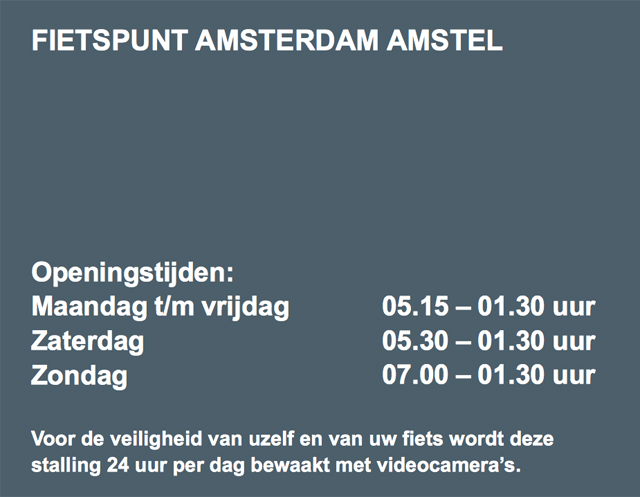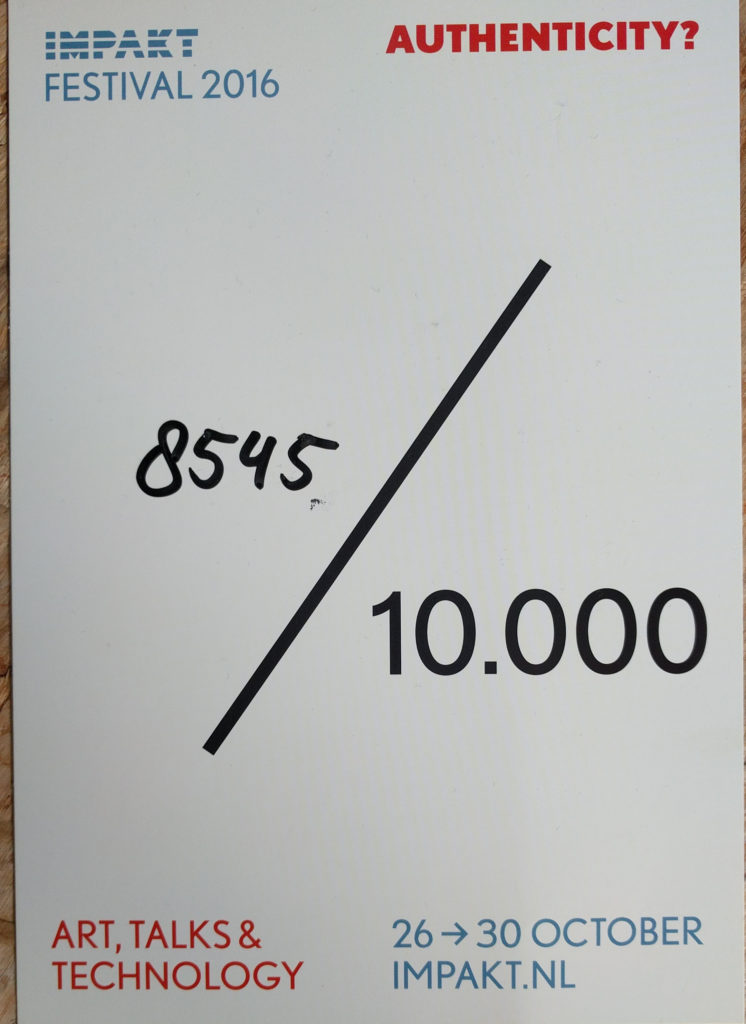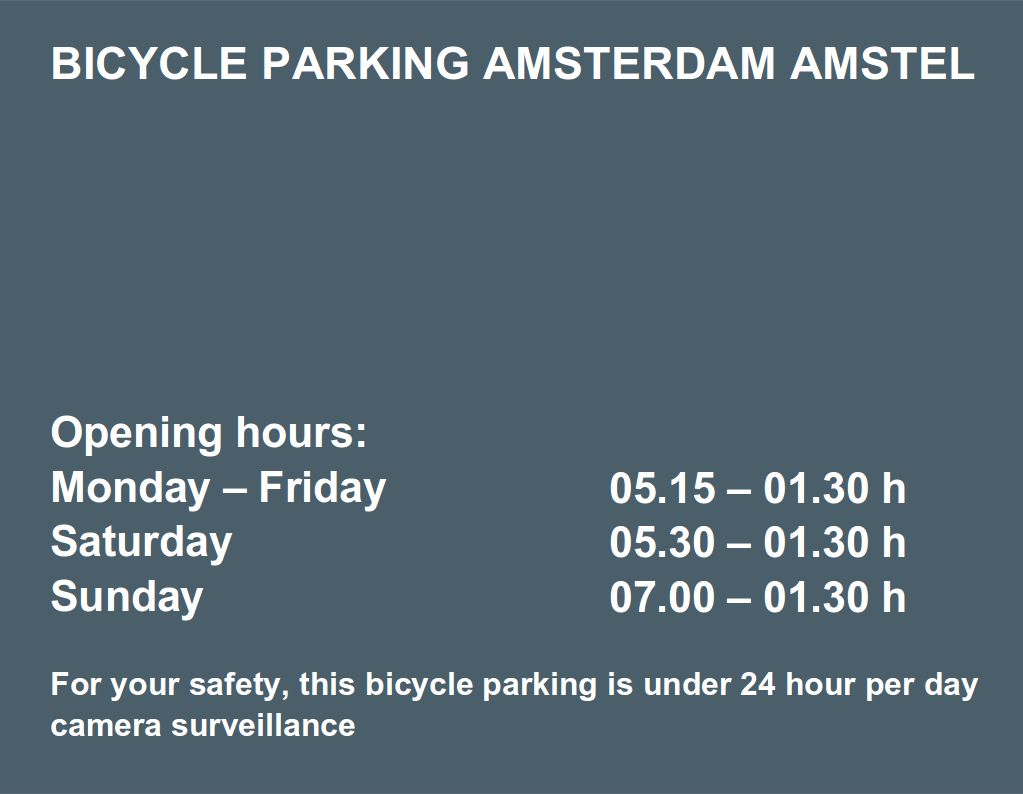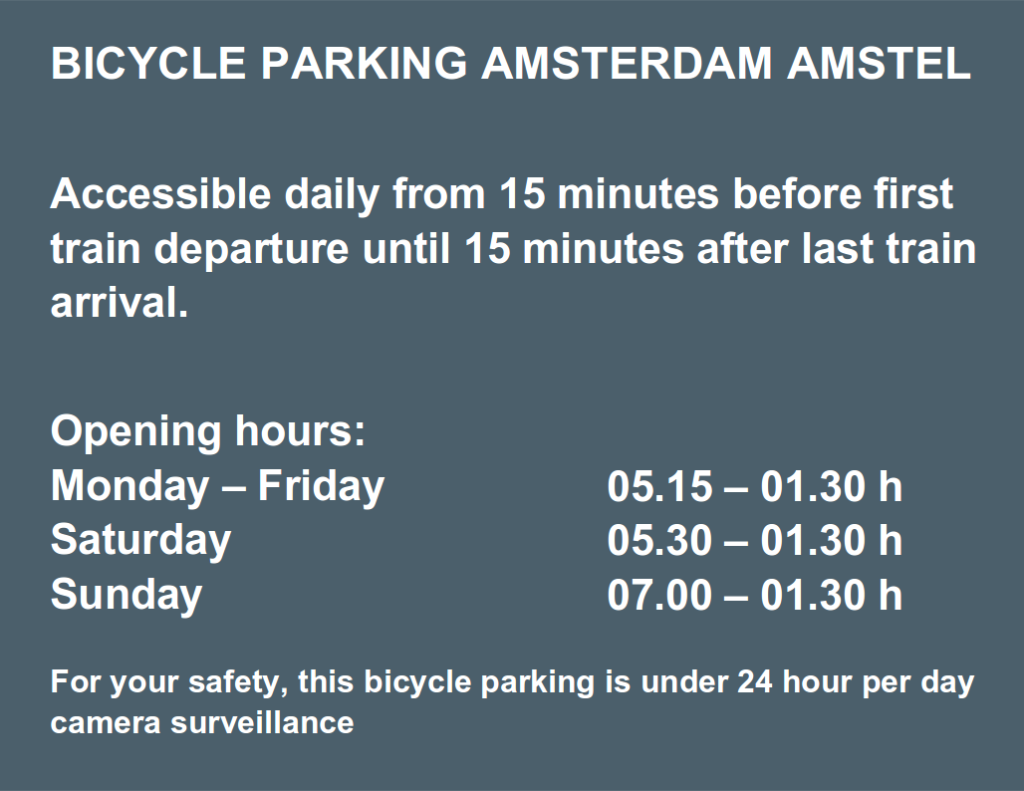
Het is zaterdag, dus nu weet je dat de stalling open is van 05.30 – 01.30 uur. Argh, 01.30 uur? Haal je dat nog wel als je de laatste trein terug pakt? Gelukkig, de makers van het bordje waren je een stap voor en voegden een slimme en elegante weergave van dezelfde informatie toe aan het bordje:

Ze plaatsten er ook een gebruiksvriendelijke vertolking van de openingstijden op:
Dagelijks toegankelijk van 1 kwartier voor de eerste trein tot 1 kwartier na de laatste trein.
Hier hebben we dus een mooi staaltje actiegerichte communicatie: dit is precies wat 95% van degenen die het bordje bekijken willen weten, zodat ze snel een beslissing kunnen maken. Netjes voor jou uiteengezet, zodat je zelf de treintijden niet naast de openingstijden hoeft te leggen.
Het schrijven van actiegerichte teksten is een goede manier om je aan je publiek aan te passen, één van de vier hoofdprincipes van communicatie die we bij Analytic Storytelling gebruiken. Door je communicatie op deze manier vorm te geven kom je je publiek tegemoet, en daarmee ook jezelf: je verhoogt de kans dat je publiek handelt zoals jij dat zou willen. Of het je er nou omgaat dat ze jouw idee uitvoeren, gebruik maken van jouw advies, jouw strategie gaan volgen, of hun fiets in jouw stalling parkeren.
Bedenk dus de volgende keer dat je communiceert: wat wil ik dat mijn publiek gaat doen? En welke stappen moeten ze zetten om dat te doen? Ga even in hun schoenen staan, of beter: vraag ze wat die stappen zijn. En pas dan je communicatie op zo’n manier aan, dat je publiek de stappen zo makkelijk mogelijk kan zetten.
 Stijn is directeur, adviseur en trainer van Analytic Storytelling. We helpen mensen om inhoudsgedreven verhalen te maken. Dat betekent: heldere en overtuigende communicatie over complexe inhoud.
Stijn is directeur, adviseur en trainer van Analytic Storytelling. We helpen mensen om inhoudsgedreven verhalen te maken. Dat betekent: heldere en overtuigende communicatie over complexe inhoud.






